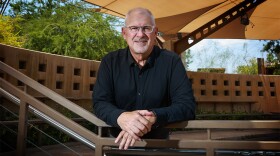A handful of public officials, healthcare providers, members of the community, and journalists sit quietly in one of the Southern Nevada Health District’s main meeting rooms. Eyes are directed toward a large screen displaying eight unique presentations, brimming with statistics and survey data.
This is the Community Health Assessment Prioritization Meeting, a gathering convened every five years, wherein public health authorities vote on the region’s top three health threats to funnel funding and energy toward over the next half-decade. This year, one of those was access to care.
It’s an open secret that Clark County has some startlingly bad metrics on this front. Whether it’s one in four residents failing to receive annual checkups, or up to 33 percent of East and Central Las Vegans reporting no health insurance, the region has faced longstanding barriers to connecting people with quality medical care.
While experts estimate that it’ll take years to make significant improvements to this problem, local healthcare players this year and next are attempting to make a dent through developments in the following areas.
Children’s hospital
Largest among planned facilities, and furthest down the road, is Intermountain Health’s proposed children’s hospital — Nevada’s first such freestanding facility (Sunrise Hospital and Medical Center includes a children’s hospital). It expected to break ground in early 2026, with an eye toward opening to the valley’s 500,000 children sometime in 2030.
“Everyone’s excited about it,” says the hospital’s recently named president, Lawrence “Larry” Barnard. “We’re looking at (offering) pediatric ... neurosurgery, orthopedics, oncology” — treatments that are among those that around 1,500 young people must now travel out of state to receive each year.
Intermountain Health believes that having an “anchor” hospital will help attract more pediatric subspecialists from these fields to the state.
Stem cell transplant center
Yet, pediatric patients aren’t the only cohort forced to leave Nevada because of too few providers. For years, adult cancer patients requiring allogeneic (read: donor-supplied) stem cell transplants for blood and bone marrow cancers have been sent to neighboring states with better oncology facilities.
June marked the end of that, as MountainView cut the ribbon on an adjacent day hospital, home of the new-to-Nevada Sarah Cannon Transplant & Cellular Therapy Program. Locals with illnesses such as leukemia and lymphoma can receive treatments during the day, go home at night, and come back the following day.
This allows patients in a state where cancer is still the second leading cause of death, according to CDC data, to spend more time with family. It also reduces their chances of catching a concurrent infection while immunocompromised, the risk of which increases the more time they spend in a hospital.
The program’s medical director, Carolyn Mulroney, says her immediate goal is making the hospital self-sufficient.
“I’m working very hard at recruiting the best practitioners, physicians, pharmacists, nurses, and then hopefully continuing to bring people here,” she says. “But we’re also training from within, so that we establish a long-term pathway for this program and other programs like it to be sustainable in Nevada.”
Crisis stabilization center
An equally visible, but more acute, shortage comes in the form of outpatient mental health facilities — Mental Health America ranks Nevada 51st in the nation overall for its severe lack of providers and high prevalence of mental illness.
In response, yet another first for the region comes in the form of a new crisis stabilization center, also opened to the public in June. Its providers are attempting to reduce the burden on hospital ERs, where people experiencing mental and behavioral health crises often go first, and subsequently experience long wait times and very little specialist care.
The center is a partnership between the state — which allocated more than $11 million to the project — and various local entities, including Clark County and University Medical Center (UMC). The latter’s CEO, Mason Van Houweling, says access is at the heart of the facility’s raison d’être: “Regardless of their ability to pay or their insurance, we’re going to see every patient coming through our doors.”
Dental clinic
The champions of another community initiative, UNLV’s planned Shadow Lane dental clinic, would agree. Their goal is to increase access for another underserved population: Nevadans with intellectual or developmental disabilities. It will also serve people born with cleft palates. Upon the clinic’s opening this summer, it will offer the state’s only treatments for the condition since they were paused at the beginning of the pandemic.
It’s all made possible by a funding bill (SB280) passed in the 2025 legislative session. Through ramps and extra-wide architecture, the clinic (which will double as a training facility for future dentists) aims to reduce dental care barriers for the almost 15 percent of Nevadans living with a disability.
“We’re transforming the standard of care in Nevada,” said James Mah, dean of UNLV’s School of Dental Medicine, in a June press release.
MD program
All these new openings are only feasible with a robust graduate medical system. That’s something Roseman University is hoping to enhance with its recently accredited doctor of medicine program, only the third in Nevada. The first 60 students, matriculated in July, will train at the University’s Summerlin campus, which is being expanded from a collection of administrative buildings to a fully functioning medical school. It’s slated to be finished by 2032.
A strong focus is on improving physician diversity, as well as med-school acceptance rates for students of color, who lack access to training at a greater rate than their white peers.
“This is a health-outcome issue for this country and our communities,” says Pedro Greer, Roseman’s founding dean. “Hopefully we can change the model from ‘What happens in Vegas stays in Vegas’ to ‘What happens in Vegas, the world gets to know.’”









